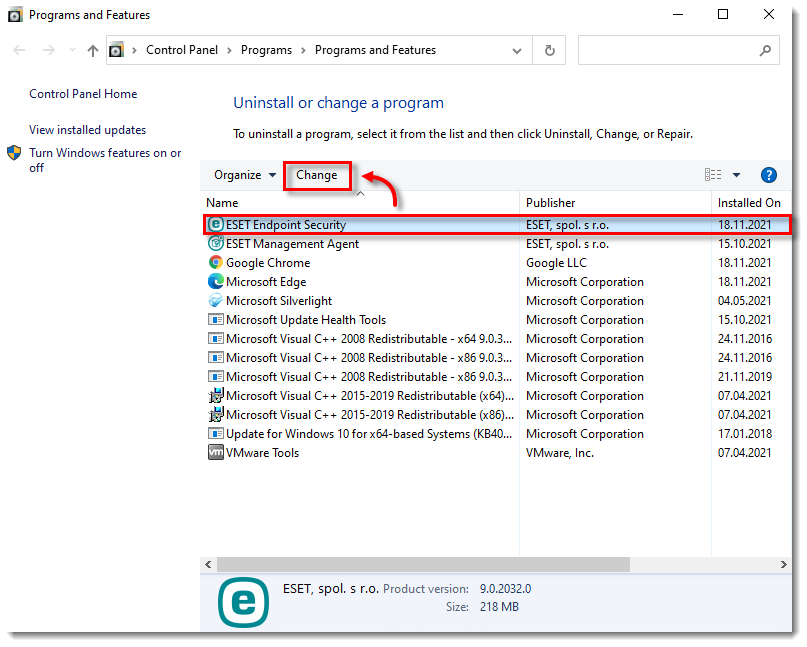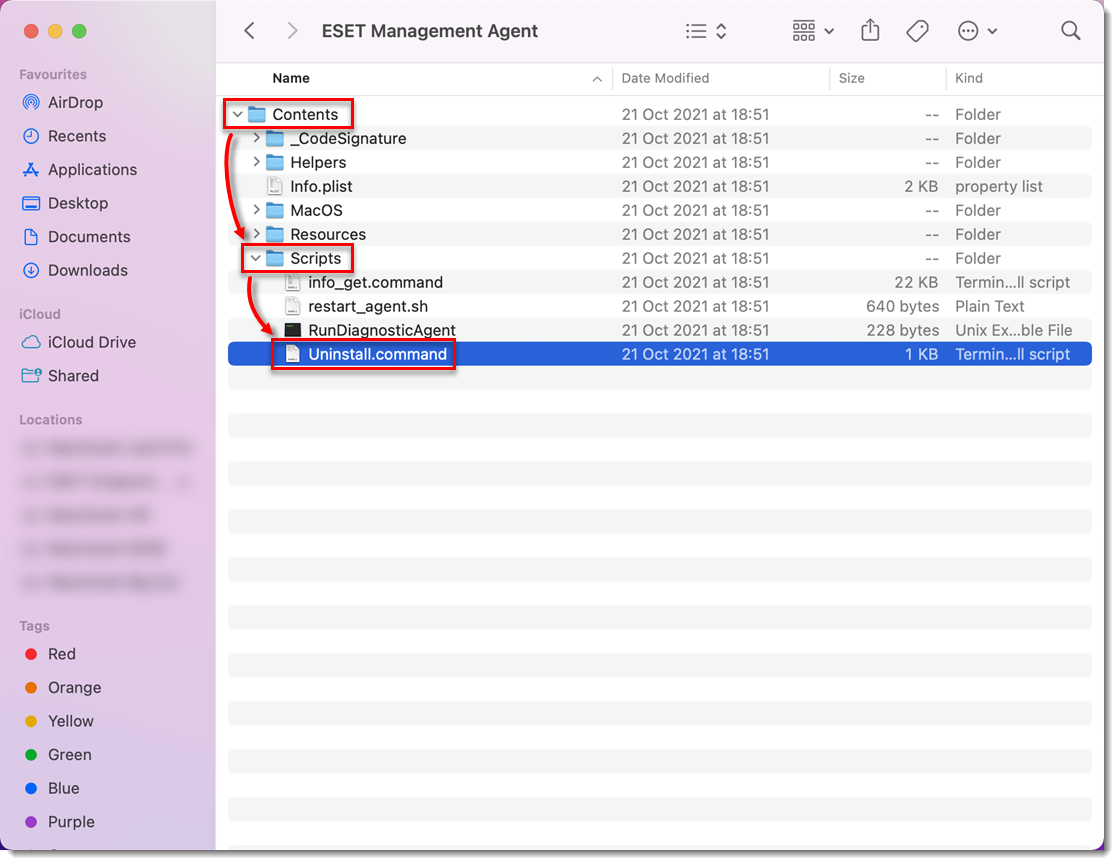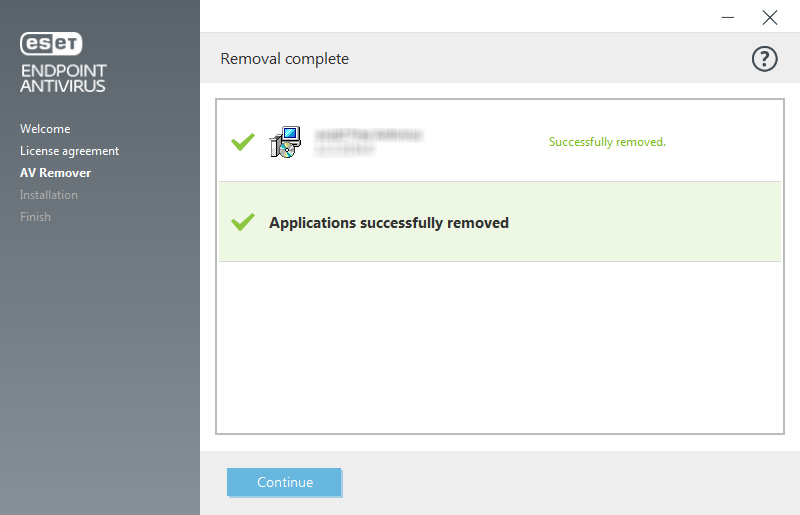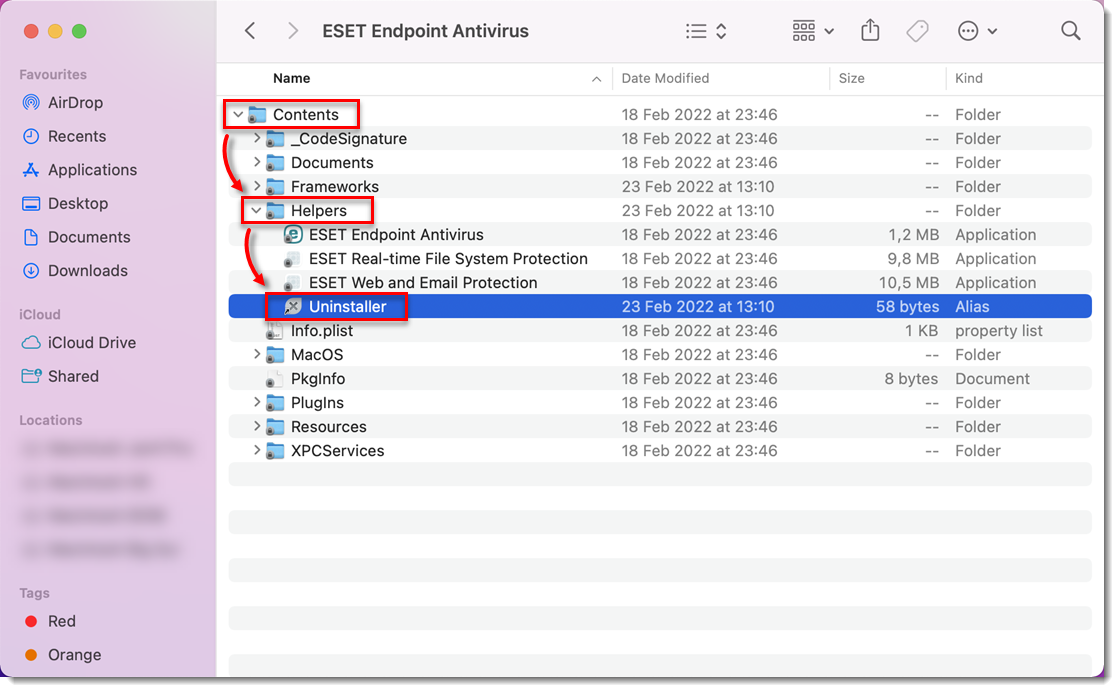

- #UNINSTALL ESET ENDPOINT ANTIVIRUS HOW TO#
- #UNINSTALL ESET ENDPOINT ANTIVIRUS INSTALL#
- #UNINSTALL ESET ENDPOINT ANTIVIRUS ZIP FILE#
- #UNINSTALL ESET ENDPOINT ANTIVIRUS SOFTWARE#
- #UNINSTALL ESET ENDPOINT ANTIVIRUS CODE#


The steps below will help you to remove ESET Antivirus quickly from your Windows PC. Not got time to stick around for the rest of the article? No problem.
#UNINSTALL ESET ENDPOINT ANTIVIRUS SOFTWARE#
Whether you’re ditching ESET for another antivirus, having issues or the software was installed as bloatware that came with your computer, here are some surefire methods to ensure you never see traces of ESET on your system again. \Uninstall-ESET_EEA.ps1 -DeploymentType "Uninstall" -DeployMode "Interactive"Ħ0000 - 68999: Reserved for built-in exit codes in Deploy-Application.ps1, Deploy-Application.exe, and AppDeployToolkitMain.ps1Ħ9000 - 69999: Recommended for user customized exit codes in Deploy-Application.ps1ħ0000 - 79999: Recommended for user customized exit codes in AppDeployToolkitExtensions.ESET Internet Security provides a wealth of features to protect you online and to secure your device from offline threats, but not everyone chooses to have it installed, leading to users seeking ways to uninstall ESET from their systems. \Uninstall-ESET_EEA.ps1 -DeploymentType "Uninstall" -DeployMode "Silent" \Uninstall-ESET_EEA.ps1 -DeploymentType "Uninstall" -DeployMode "NonInteractive"
#UNINSTALL ESET ENDPOINT ANTIVIRUS INSTALL#
If 3010 is passed back to SCCM, a reboot prompt will be triggered.Ĭhanges to "user install mode" and back to "user execute mode" for installing/uninstalling applications for Remote Destkop Session Hosts/Citrix servers.ĭisables logging to file for the script.
#UNINSTALL ESET ENDPOINT ANTIVIRUS CODE#
NonInteractive mode is automatically set if it is detected that the process is not user interactive.Īllows the 3010 return code (requires restart) to be passed back to the parent process (e.g. Options: Interactive = Shows dialogs, Silent = No dialogs, NonInteractive = Very silent, i.e. Specifies whether the installation should be run in Interactive, Silent, or NonInteractive mode. The script dot-sources the AppDeployToolkitMain.ps1 script which contains the logic and functions required to install or uninstall an application. The install deployment type is broken down into 3 main sections/phases: Pre-Install, Install, and Post-Install. The script either performs an "Install" deployment type or an "Uninstall" deployment type. The script is provided as a template to perform an install or uninstall of an application(s). Copy the PowerShell script below to “C:\Downloads\ Uninstall-ESET_EEA“ & name it Uninstall-ESET_EEA.ps1.You should now see the AppDeploymentToolkit folder with files at “C:\Downloads\Uninstall-ESET_EEA” Copy-Item -Path "C:\Downloads\PADT\Toolkit\AppDeployToolkit" -Destination "C:\Downloads\Uninstall-ESET_EEA\AppDeployToolkit" -Recurse.Enter the following commands to copy the AppDeployToolkit folder to “C:\Downloads\ Uninstall-ESET_EEA“:.Expand-Archive -Path C:\Downloads\PSAppDeployToolkit_v3.8.4.zip -DestinationPath C:\Downloads\PADT.

Enter the following command to extract the contents of the zip file:.Unblock-File -Path C:\Downloads\PSAppDeployToolkit_v3.8.4.zip.Enter the following command to remove the Zone.Identifier:.Open Windows PowerShell by Right-Clicking on Windows PowerShell and selecting Run as Administrator.
#UNINSTALL ESET ENDPOINT ANTIVIRUS ZIP FILE#
#UNINSTALL ESET ENDPOINT ANTIVIRUS HOW TO#
How to Uninstall ESET Endpoint Antivirus Using the PowerShell App Deployment Toolkit This tool is an absolute must for Microsoft Endpoint Manager Configuration Manager (MEMCM) / (SCCM) Administrators or anyone who is responsible for packaging and deploying software. The PowerShell App Deployment Toolkit can be used to replace your WiseScript, VBScript and Batch wrapper scripts with one versatile, re-usable and extensible tool. This article will serve as an informative guide and give you a clear understanding of how to perform silent or interactive uninstalls of ESET Endpoint Antivirus using the Powershell App Deployment Toolkit.


 0 kommentar(er)
0 kommentar(er)
